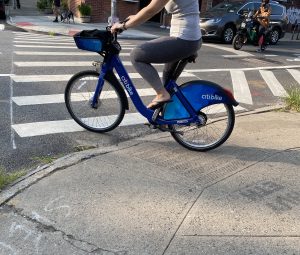Key Concepts
1 Universal Design
Universal Design

Universal Design is the process of creating products (devices, environments, systems, and processes) that are usable by people with the widest possible range of abilities, operating within the widest possible range of situations (environments, conditions, and circumstances). Universal Design emerged from the slightly earlier concept of being barrier-free, the broader accessibility movement, and adaptive technology and assistive technology. It also seeks to blend aesthetics into these core considerations.
Let’s review two common definitions of Universal Design.
Definition 1
Universal Design or Universal Instructional Design (UID)
an approach to teaching that consists of the proactive design and use of inclusive instructional and evaluation strategies. This approach provides academic access to a broad range of learners, including students with disabilities, while:
- maintaining academic standards […]
- reducing the need to having to retrofit after a course is already underway[1]
Definition 2
Universal Instructional Design (UID)
an approach to designing course instruction, materials and content to benefit people of all learning styles without adaptation or retrofitting. UID provides equal access to learning, not simply equal access to information. UID allows the student to control the method of accessing information while the instructor monitors the learning process and initiates any beneficial methods… It should be noted that UID does not remove academic challenges; it removes barriers to access.[2]
Why Universal Design?

There’s an old adage that summarizes the “why” of universal design: what’s essential for some is beneficial for all. For example, curb cuts were designed for people in wheelchairs, but they benefit people pushing strollers or pulling wheeled suitcases, people using crutches or a cane, people making deliveries with dollies, and a host of others, including the Citi Bike rider pictured at right. Similarly, captions in a course video are essential for students who are hearing impaired, but they also benefit students new to the video’s terminology, students for whom English is a second or third language, students working in noisy environments, or students working on a commute without headphones.
For our purposes, we frame the practice of using Universal Design in a holistic and manageable way and begin by addressing the barriers that are easy to anticipate and proactively remediate. This toolkit, therefore, will provide guidance if the answer to any of the following questions is “yes.”
- Do I have visual materials that present core concepts that not all students may be able to see or understand?
- Do I have multimedia materials (e.g., audio, video) that present core concepts that not all students may be able to be hear, see, or otherwise access?
- Do I have documents that present core concepts in a format that not all students may be able to access?
We focus on an adjunct to Universal Design: Universal Design for Learning (UDL). UDL is a set of principles for curriculum development that gives all individuals equal opportunities to learn and provides a blueprint for creating instructional goals, methods, materials, and assessments that work for everyone. Rather than a single, one-size-fits-all solution, it offers a flexible approach that can be customized and adjusted for individual needs.[3]
Attributions
- Cartoon from “Accessibility Handbook for Teaching and Learning” by Briana Fraser and Luke McKnight is licensed under CC BY-NC-SA 4.0.
- Text adapted from “Accessibility Toolkit—2nd Edition” by Amanda Coolidge, Sue Doner, Tara Robertson, and Josie Gray (a collaboration between BCcampus, Camosun College, and CAPER-BC) licensed under CC BY 4.0.
- University of Victoria, "Universal Instructional Design (UID)," Centre for Accessible Learning, accessed March 27, 2018, https://www.uvic.ca/services/cal/staff/universal-instructional-design/index.php. ↵
- Ohio State University, "Universal Design for Learning," Partnership Grant: Fast Facts for Faculty, accessed March 27, 2018, https://ada.osu.edu/resources/fastfacts/Universal_Design.htm. ↵
- "The UDL Guidelines," CAST, accessed August 21, 2018, http://udlguidelines.cast.org/. ↵
